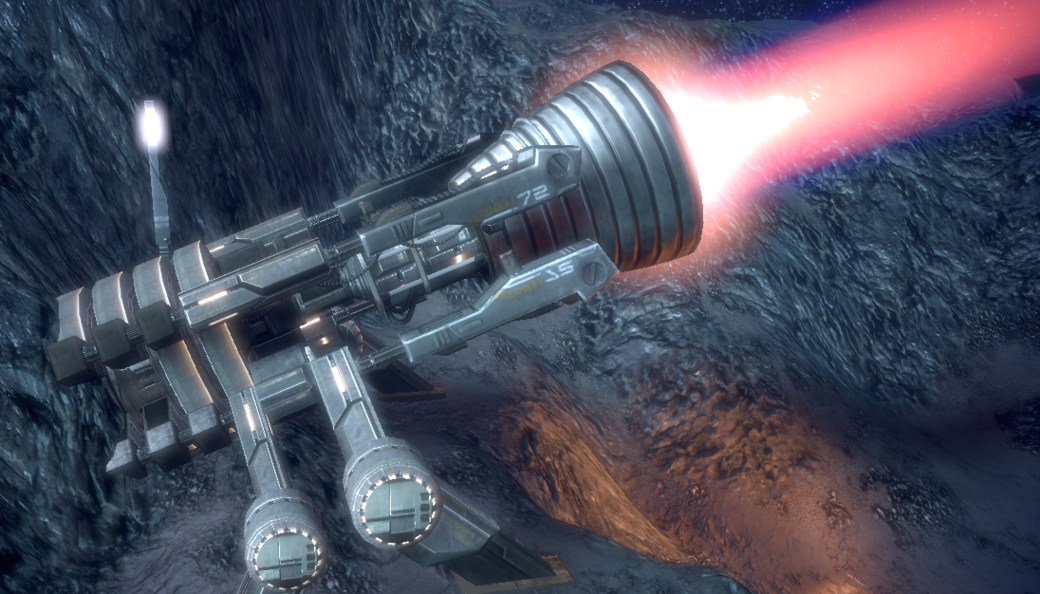
Putting the “Science” in “Science Fiction” – Space Travel 2: Plasma Engine
In my previous blog, I wrote about the ion engine, one of the main avenues of research into alternative methods of space flight. There has been a great deal of research into ion engines, but scientists are examining other technologies that would allow “warp drive” interplanetary and interstellar travel. One of these other methods, related to the ion engine, is the plasma engine, which works in a very similar way to an ion engine, but releases a jet of high-temperature plasma instead of loose ions to provide thrust. This plasma is created through various methods, including bombardment of particles by radio waves. The plasma is contained and controlled by an electromagnetic field that channels it to the rear of the craft to provide thrust. There is some debate over which engine is more feasible, but both engines have similar advantages over current chemical engines.

(According to Wikipedia, plasma has properties quite unlike those of solids, liquids or gases and is considered a distinct state of matter. Like gas, plasma does not have a definite shape or volume unless enclosed in a container; unlike gas, under the influence of a magnetic field, it may form structures such as filaments, beams and double layers. Some common plasmas are found in stars and neon signs. In the universe, plasma is the most common state of matter for ordinary matter, most of which is in the rarefied intergalactic plasma and in stars. Much of the understanding of plasmas has come from the pursuit of controlled nuclear fusion and fusion power, for which plasma physics provides the scientific basis.)
Plasma engines promise to provide a great deal more power than ion engines, and thus would enable a craft to move much faster and carry heavier loads, with estimates indicating that advanced plasma engines like the VASIMR could reach speeds of up to 123,000 miles per hour. This comes at the downside of greatly increased power requirements, however, and increases the weight of a ship and its fuel. The increases in weight mitigate the power benefits of a plasma engine somewhat, and there are also concerns about potential problems caused by the electromagnetic field that is used to control the plasma. Particular concerns about this involve the possibility of electromagnetic fields interfering with instruments or creating problems with navigation. These issues seem to be resolvable without too much difficulty, however, and if the power generation problem is addressed, then both plasma and ion engines will become much more feasible for use in space travel.

In the quest to find a powerful and fuel-efficient power source for future space travel, many researchers look to fusion power to provide a solution. Once fusion power becomes feasible and portable enough to place into a spacecraft, it may solve the power generation problem, and while fusion generators will be heavy, the fuel they use is comparatively light. A fusion reactor will certainly produce enough power to allow an ion or plasma engine to function, and will allow these engines to be made more powerful since both engine types provide increased thrust as more energy is provided to them. It may also be possible to mount multiple ion or plasma engines in arrays to increase power and maneuverability.
When it comes to plasma engines, fusion reactors provide another potential option rather than simply providing power. Using a fusion reaction to produce electricity that is then used to create plasma is a somewhat roundabout method of creating thrust, and another engine type cuts out the middle stages. This type of engine – sometimes called a fusion torch or simply a fusion engine – uses the fusion reaction itself to provide thrust. In an engine of this type, the fusion reaction is initiated in a chamber that lacks magnetic shielding on one side. This causes the intense plasma produced by the fusion reaction to escape in that direction, using the full force of the reaction to produce far greater thrust than other methods are capable of. If the technology to create fusion reactions becomes feasible, fusion engines will also likely become a reality, opening up new possibilities to travel across our solar system and even beyond it.

The desire to conquer the limitless vastness of space shows humanity’s constant drive to learn and explore, but current technology has limited us from going any farther than the Moon. As new engines and other technologies become available, space travel may someday become easy and quick enough to allow Mankind to reach the stars.
Top Photo: masseffect.wikia.com













